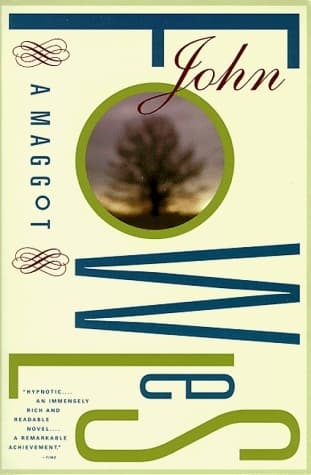
Book Review Summary: A Maggot
Introduction
"A Maggot" by John Fowles is a novel that takes readers on a journey through the English countryside in the 18th century. The story revolves around five individuals who are traveling under assumed names and are en route to a mysterious rendezvous. As the story unfolds, one of them will be hanged, one will vanish, and the others will face a murder trial. Fowles' writing style is known for its dense prose and metaphysical explorations, making "A Maggot" a challenging yet rewarding read.
About John Fowles
John Fowles, the author of "A Maggot," was born in Leigh-on-Sea, Essex, in 1926. He attended Bedford School and later studied French at the University of Edinburgh. After serving in the military during World War II, Fowles began teaching English literature at various institutions, including the University of Poitiers in France and St. Godric's College in London. He also wrote poetry and novels during this time, eventually finding success with his novel "The Collector" in 1963. Fowles continued to write and publish works throughout his career, including "The Magus" in 1965 and "The French Lieutenant's Woman" in 1969. He passed away in 2005 after a long illness.
Analysis of Views
- Dense and metaphysical prose: Many readers found Fowles' writing style dense and challenging, particularly in the exploration of metaphysical concepts. The narrative often veered off into philosophical and existential musings, which some readers found off-putting.
- Unconventional plot structure: The novel's structure, primarily consisting of interrogations and police procedural elements, was seen as unconventional by some readers. While this structure allowed for a unique storytelling experience, it also made it difficult for readers to fully engage with the characters and their motivations.
- Themes of reason vs. superstition: Fowles explores the conflict between reason and superstition throughout the novel. Readers appreciated the thought-provoking nature of these themes, but some found them overwhelming or too abstract to fully grasp.
- Lack of resolution: The novel ends without providing clear resolutions to the various plot threads. Some readers felt frustrated by this lack of closure, while others found it to be a deliberate choice by the author to leave room for interpretation.
- Historical setting: The 18th century setting of the novel was praised by readers for its immersive quality. The historical details added depth to the story and provided a unique backdrop for the exploration of themes related to reason and faith.
Reasons for Recommendation
- Thought-provoking exploration of themes: Readers appreciated the thought-provoking nature of Fowles' writing, particularly in his exploration of reason vs. superstition. The novel challenges readers to question their beliefs and consider alternative perspectives.
- Unique storytelling approach: The unconventional plot structure and narrative techniques used by Fowles set "A Maggot" apart from other novels. Readers found this approach to be engaging and refreshing, even if it required some adjustment to fully engage with the story.
- Historical setting: The historical setting of the novel added depth and richness to the story, allowing readers to immerse themselves in a different time period and explore the social and cultural norms of the 18th century.
Reasons for Not Recommendation
- Dense prose and metaphysical explorations: Some readers found Fowles' dense prose and metaphysical explorations overwhelming or difficult to follow. They felt that the novel required a certain level of literary knowledge or patience to fully appreciate.
- Lack of resolution: The lack of clear resolutions at the end of the novel was seen as a drawback by some readers. They felt that the open-ended nature of the story left them feeling unsatisfied and frustrated by the lack of closure.
- Unconventional plot structure: The unconventional plot structure of "A Maggot" was also a reason for some readers to not recommend the book. They found it challenging to engage with the characters and their motivations due to the non-linear narrative structure.
Conclusion
"A Maggot" by John Fowles is a challenging yet rewarding novel that explores themes related to reason vs. superstition in an 18th century English countryside setting. While some readers found Fowles' dense prose and metaphysical explorations overwhelming, others appreciated the thought-provoking nature of his writing. The unconventional plot structure and lack of resolution at the end of the novel were also points of contention for some readers, but others found them to be part of the book's unique charm. Overall, "A Maggot" is a book that requires patience and an open mind, but offers a rewarding reading experience for those willing to engage with its complex narrative structure and philosophical explorations.